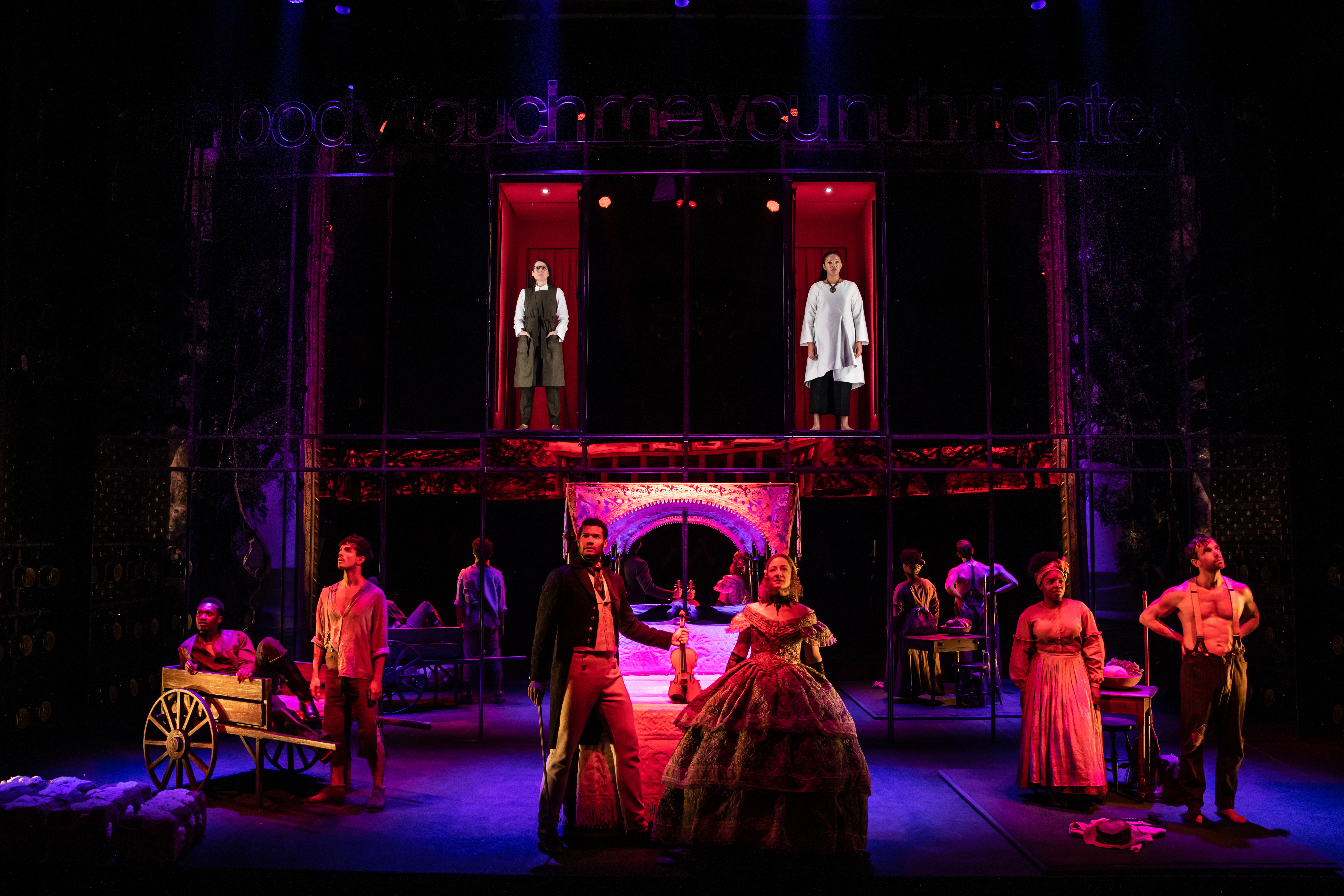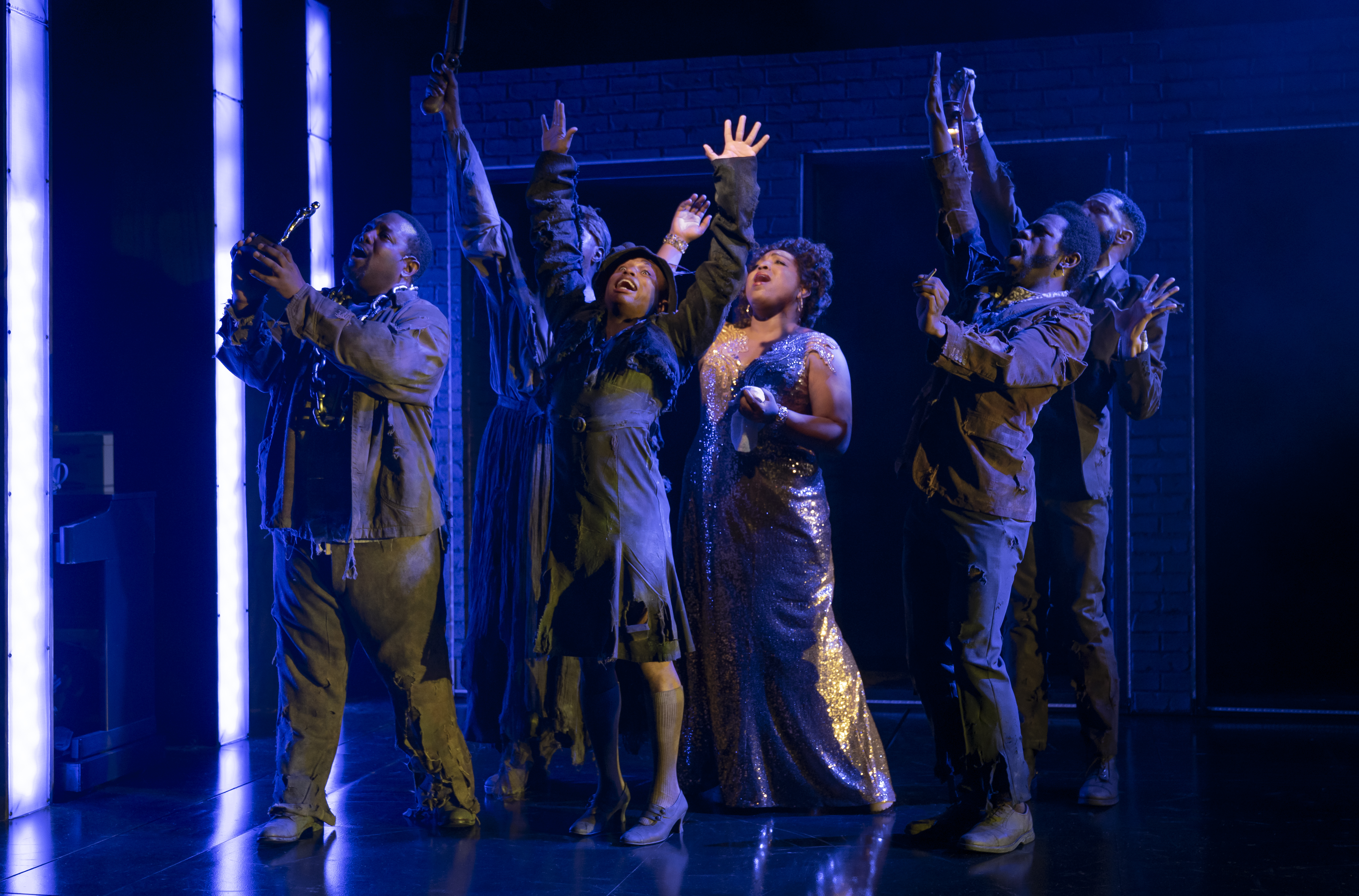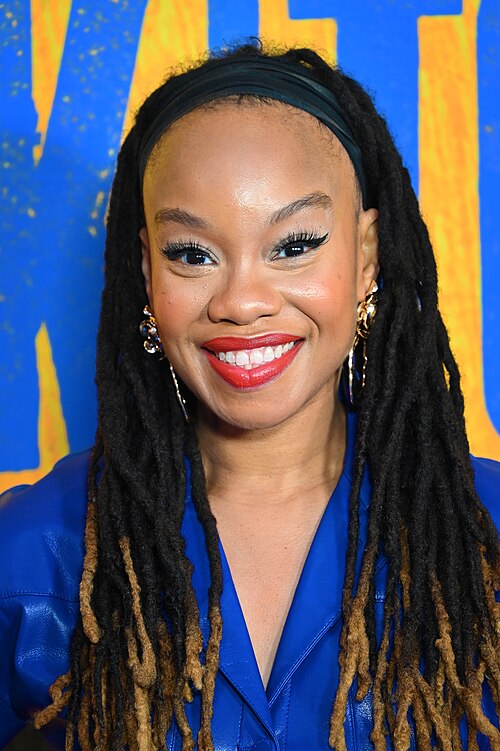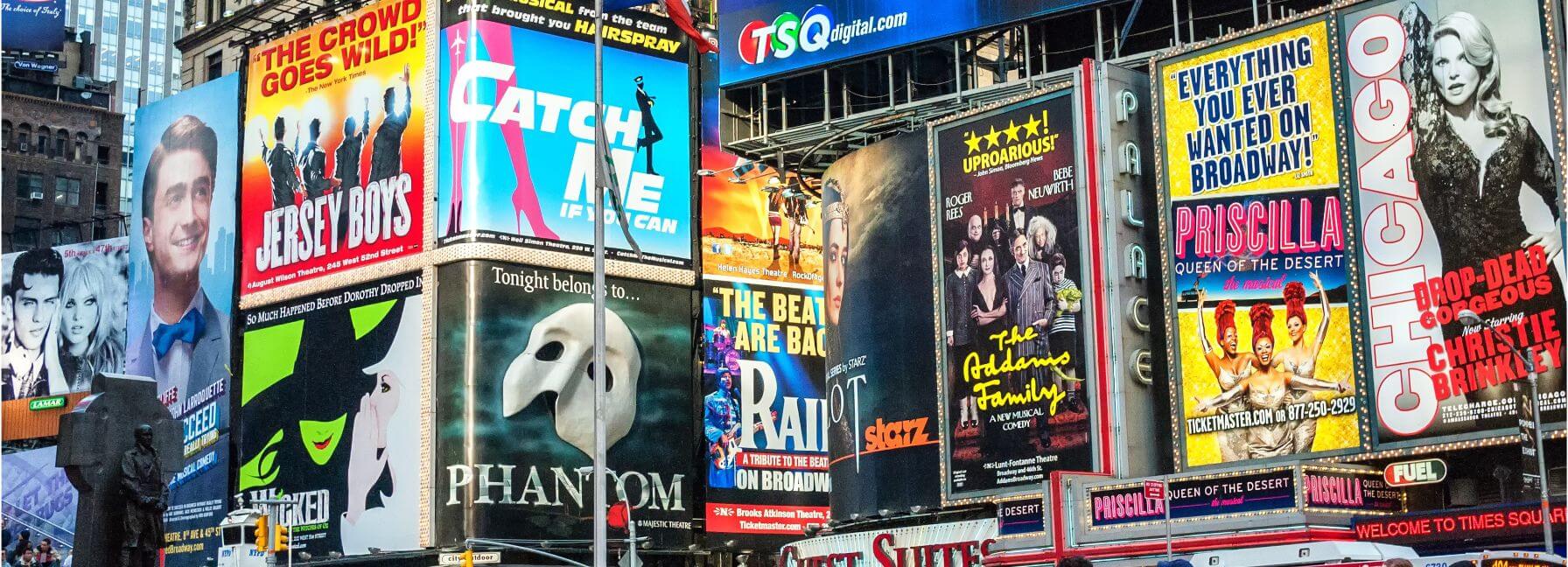Diversity & Inclusion Musicals Plays
Breaking Barriers: Celebrating the Achievements of Diverse Theatre Artists
Alexandra Appleton | Last updated: June 04, 2025
Theatre has always held a mirror to society. It challenges norms, provokes thought, and invites audiences into lives far removed from their own. But for too long, the stories told on stage and the voices telling them did not reflect the full spectrum of human experience. Today, that tide is turning...although not as quickly as many of us would like. Around the world, diverse theatre artists are striving to break barriers, reshape narratives, and make space for a more inclusive, vibrant stage.
In this blog post, we celebrate some of the remarkable individuals and companies championing diversity in theatre. There are many great examples across the world, so let’s take a look at some you might have heard of and some you might not! Whether you’re studying drama, planning your school production, or simply passionate about live performance, their stories offer both inspiration and a deeper understanding of how theatre evolves to reflect the world we live in.
A New Generation of Storytellers

The full cast of Slave Play on Broadway. Photo by Matthew Murphy.
One of the most exciting shifts in recent years has been the rise of playwrights and creators who center diverse experiences in their work. Jeremy O. Harris, for instance, took Broadway by storm with Slave Play, a bold, provocative examination of race, sex, and power. The play received a record-breaking 12 Tony Award nominations and ignited conversations across the theatre world about representation and the boundaries of storytelling.
Another powerful voice is that of British playwright and performer Michaela Coel, known for her television work but also deeply rooted in theatre. Her early stage plays, such as Chewing Gum Dreams, showcased the raw, unfiltered voice of a young Black woman navigating a complex world—a perspective too often absent from mainstream theatre.
However, it is important to remember that we still have a long way to go. According to the The Asian American Performers Action Coalition (AAPAC) 2021-2022 Visibility Report, 76.3% of all playwrights on Broadway were White, and all BIPOC writers represented were Black. Yet there were 9 productions written by AAPI/Asian-American writers in the non-profit sector, which was a record high.
Inclusive Stages and Visionary Companies
But of course the push for diversity isn't limited to individual artists. Theatre companies across the globe are committing to inclusive casting, programming, and leadership. In the U.S., The National Black Theatre (NBT) in Harlem, under the leadership of CEO Sade Lythcott and Artistic Director Jonathan McCrory, continues to center African-American experiences and uplift Black creatives. NBT has nurtured generations of artists and recently announced a historic major capital redevelopment project that will transform the current property into a 21st-century destination for Black culture through theatre.
Across the pond, Talawa Theatre Company has been a cornerstone of Black British theatre for nearly four decades. Founded in 1986, Talawa remains committed to producing work that reflects the Black British experience, from classic revivals to new writing. Their recent production of Recognition ( 2023), a new play by Amanda Wilkin inspired by the life and work of black British composer Samuel Coleridge-Taylor, was praised for its historical insight and contemporary relevance.
For artists from the Asian diaspora, East West Players in Los Angeles has long been a vital platform. As the nation’s longest-running Asian-American theatre, EWP has championed Asian-American voices since 1965. Under the new artistic direction of Lily Tung Crystal, the company continues to expand its reach, producing bold new works like Lauren Yee’s Cambodian Rock Band, which tells the powerful story of a Khmer Rouge survivor returning to Cambodia after thirty years, as well as exciting revivals such as the upcoming production of Yankee Dawg You Die.
Breaking Boundaries Beyond Race
And of course diversity in theatre goes beyond race and ethnicity. Artists are also breaking ground in representing gender identity, sexual orientation, disability, and neurodiversity.
Queer Theatre
Michael R. Jackons’ A Strange Loop is a deeply personal musical about a Black queer writer navigating his identity and place in the world. After opening off-Broadway, it earned the 2020 Pulitzer Prize for Drama and went on to win Best Musical at the Tony Awards in 2022. Its unflinching honesty and innovative form marked a watershed moment for queer representation in musical theatre. Indeed, queer theatre continues to be a driving force for change, celebrating LGBTQ+ voices and stories that challenge societal norms and broaden perspectives.

A Strange Loop on Broadway. Photo credit Joan Marcus.
The last two decades have seen a younger generation of Indigenous playwrights making their mark in Canadian theatre, interweaving discussions of race, sexuality, and identity. Most notable is Anishnaabe playwright and actor Waawaate Fobister’s play Agokwe (2008) explores an intense burgeoning relationship between two aboriginal teenage boys. The play won six Dora Mavor Moore Awards, with Fobister playing all the characters in the original production at Toronto’s Buddies in Bad Times Theatre.
Across the pond, I, Joan, a reimagining of Joan of Arc as non-binary, was performed at Shakespeare’s Globe in 2022. Written by Charlie Josephine, the production received rave reviews and sparked widespread discussion about gender identity and storytelling in classical theatre spaces. Meanwhile, smaller companies like The Queer House in London support emerging LGBTQ+ voices through development programs and fringe productions that bring authenticity and lived experience to the stage. For audiences and performers alike, engaging with queer theatre not only offers new material for performance and study but also deepens understanding of identity, resistance, and the transformative power of self-expression.
Disability & Neurodiversity
In 1991, Deaf West Theatre was founded in Los Angeles. Their most notable production was the 2015 revival of Spring Awakening--a script that has no deaf characters, but a production that cast deaf and hard of hearing actors using ASL alongside hearing actors--the first major theatrical production to do so. Ali Stroker, an actress who uses a wheelchair, was in that production of Spring Awakening, and then went to Broadway to portray Ado Annie in the 2019 revival of Oklahoma! She won the Tony Award for Best Featured Actress. Meanwhile, in the UK, the disability-led company Graeae Theatre is a longstanding organization committed to pushing boundaries and integrating deaf, disabled, and neurodivergent artists into all aspects of production.
We challenge preconceptions, smash outdated ideology and empower individuals. Graeae Theatre Company
Staying in London, the Kiln Theatre’s 2021 production of Reasons You Should(n’t) Love Me was a one-woman show written and performed by Amy Trigg, who was born with spina bifida. It offered a witty, warm, and poignant exploration of identity as a disabled woman and was awarded The Women’s Prize for Playwriting 2020.
Representation in Leadership
Of course, it is important to remember that true equity in theatre also means diverse leadership behind the scenes, in all areas of the industry. Costume and set designer, Clint Ramos, has spoken out about the importance of BIPOC representation in design and creative leadership roles. In 2016 he became the first person of color to win a Tony Award for Outstanding Costume Design of a Play for his work on Eclipsed.
Why can't we talk about it? Why doesn't it make sense to actually diversify Broadway? To make it more equitable. [...] I've been advocating for it for years, but over the summer, a bunch of white and BIPOC designers, we started Design Action, and we are advocating for a more equitable landscape in American theatre design. We are also advocating for the inclusion of a lot of younger, and rising black, indigenous and people color designers. Broadway World
Choreographer Camille A. Brown uses her dance company to explore issues of race, culture, and identity. She made her directorial debut on Broadway with the 2022 production of for colored girls who have considered suicide / when the rainbow is enuf, becoming the first Black woman to serve as both director and choreographer of a Broadway production.

Camille A. Brown. Photo credit PhilipRomanoPhoto via Wikimedia Commons, CC BY 4.0,
Industry-wide initiatives are vital to helping push for change. For example, programs like The Theatre Leadership Project (TTLP) are training and mentoring BIPOC leaders for executive roles in American theatre, ensuring that representation isn't just visible onstage but foundational to the industry's infrastructure. In a similar vein, Audra McDonald and a coalition of professionals from across the theatre industry announced the launch of Black Theatre United in 2020, an organization whose mission is to inspire reform and combat systemic racism within the theatre community. It aims to celebrate Black excellence in theatre and foster the next generation of Black talent within the industry.
Looking Ahead
However, we all know that theatre is far from finished with its journey toward true inclusivity. Challenges remain, particularly in funding, access, and the deep-seated structures that have historically marginalized certain voices. But as more doors open and more stories are told, the possibilities for transformation grow.
Diverse theatre artists are not just changing what we see on stage—they’re reimagining what theatre can be. They’re inviting audiences into new worlds, expanding empathy, and proving that there is no one way to tell a story.
So whether you’re a student choosing your first monologue, a teacher introducing your class to new playwrights, or an audience member looking for something fresh and true—look to the artists breaking barriers. They’re not just shaping the future of theatre. They are the future of theatre.
Which diverse theatre artists or productions have inspired you? Share your thoughts or classroom favorites in the comments below!
Originally Published: June 04, 2025
Last Updated: June 04, 2025
Blog Written By:
More From Diversity & Inclusion
Welcome to StageAgent
Our mission is to provide actors, directors, teachers and backstage staff with the ultimate theatre research and education platform.
Enjoy amazing theatre resources:
Browse Blog Categories
Auditions and jobs
near
{{headerProps.location}}
Upcoming performances

